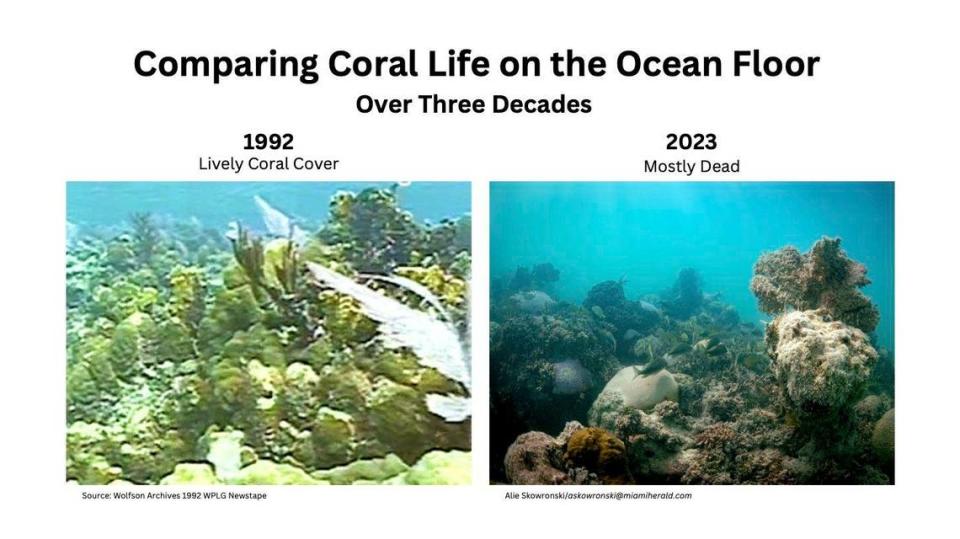The first survey of Florida’s reefs after an ‘apocalyptic’ marine heat wave offers a bleak picture of the future of the state’s renowned corals — and the restoration efforts to save them.
Scientists with NOAA’s Mission: Iconic Reefs program visited five reefs throughout the Florida Keys on Thursday to check on the health of the nursery-raised and transplanted corals researchers installed there over the last few years. They found coral graveyards.
It’s a major setback to one of the most promising solutions to Florida’s declining reefs — replanting infant coral fragments — and could represent a generation lost to last summer’s scorching sea.
At one nursery, at the Looe Key Reef in the lower Keys, researchers didn’t see a single live staghorn or elkhorn coral at any of the sites they surveyed. That’s the same spot where researchers with the Coral Restoration Foundation reported “100% mortality” in July.
NOAA only checked on transplanted staghorn and elkhorn coral at the five reefs they surveyed, and the outlook wasn’t good. However, the report did note that “anecdotal evidence” suggests that other types of coral, like massive, brain and boulder, might have fared better, including at places like Looe Key.
Scientists only found living elkhorn coral at three sites: Carysfort Reef, Sombrero Reef in the middle Keys and Eastern Dry Rocks off Key West. The only surviving staghorn samples were at the northernmost reefs, Carysfort and Horseshoe Reef.
“Preliminary data indicate that less than 22% of approximately 1,500 staghorn coral (Acropora cervicornis) surveyed remain alive,” the scientists reported.
READ MORE: ‘Apocalyptic’: Scientists rush to rescue corals withering in Florida’s record-hot waters
This snapshot of coral health reveals that some of coral scientists’ worst fears after this summer’s record-breaking heat wave may be true. In 2023, the coastal waters off South Florida heated up earlier than usual, got hotter than they ever have in recorded history, and stayed that way for longer than they have in 30 years.
In those conditions, which topped 90 degrees Fahrenheit at times, the symbiotic algae that live within corals are spit out, leaving the corals bone-white and starving, vulnerable to sunburn and disease.

The threat was so dire, scientists took the unusual step of removing baby corals from their underwater nurseries and storing them on land, or canceling replanting efforts altogether.
Not all corals die after being bleached, but this NOAA report reveals that many did.
Can Florida’s corals survive climate change? Fate of one small reef may hold the answer
This report is just an initial look at how the youngest coral fragments on Florida’s reefs survived. Scientists have yet to complete a comprehensive survey of how the centuries-old reefs that dot Florida’s coast fared.
“The findings from this assessment are critical to understanding the impacts to corals throughout the Florida Keys following the unprecedented marine heatwave,” Sarah Fangman, Florida Keys National Marine Sanctuary superintendent, said in a statement released with the NOAA report. “They also offer a glimpse into coral’s future in a warming world.’
Signup bonus from




